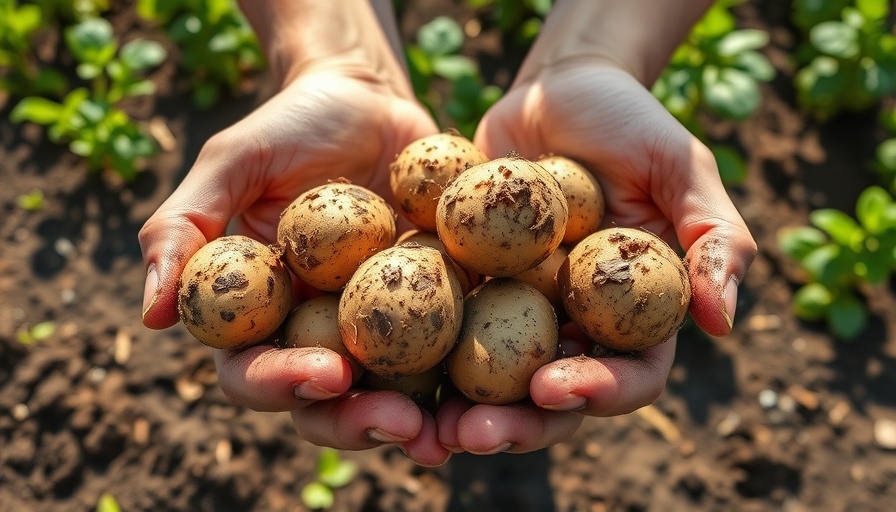
Unlock the Secret to Year-Round Freshness: Grow Your Own Potatoes
Growing potatoes is not just a rewarding experience; it is a practical skill that can transform your culinary habits and enhance your self-sufficiency. One thing my mother always reminded me was that if you can plant, grow, and successfully harvest potatoes, you'll never find yourself in a food scarcity situation. This is not merely a saying; it's a profound truth in the garden of life.
Choosing the Right Seeds for Successful Harvest
For the best results, purchasing high-quality potato seeds is crucial. Opt for certified organic and non-GMO seeds whenever possible; these varieties promise not just quality but longevity, allowing you to save and replant seeds season after season. Popular potato seed varieties include Early Season types like 'All Red' and 'Purple Viking,' Mid-Season favorites like 'Yukon Gold,' and Late-Season options such as 'German Butterball.' Get your seeds early, ideally in spring, as they tend to sell out quickly!
Preparing Soil: The Foundation of Healthy Potatoes
A plant is only as good as its soil. Start by prepping your soil in both spring and fall, mixing in organic compost, Miracle-Gro potting soil, and worm castings for optimal growth. Ensure your soil maintains a pH level of 5.8 to 6.5 for the best possible growth environment. Remember to choose an area with plenty of sunshine, as potatoes thrive under warm, favorable conditions.
The Art of Planting Potatoes
As you plant, dig holes at least 4-6 inches deep with the eyes of the potatoes facing upwards. Cover them carefully and progressively mound additional soil as your plants grow, which encourages the formation of more potatoes underground. It’s common to see potatoes turn green if they're exposed to sunlight, so keep them properly covered!
Watering Wisely: Too Much or Too Little?
Maintaining adequate moisture in the soil is paramount for potato health. Ensure that the ground is wet but never waterlogged. Watering before planting helps, but don’t forget the importance of dry soil when it’s time to dig. Rain can be a friend or foe, so always check conditions before harvesting.
Harvesting: Timing is Everything
The magic moment arrives 2-3 weeks after your potato flowers bloom. At this stage, you can begin to dig up your tubers. Harvesting in dryer conditions can ease the digging process, so wait for a clear day if possible. Finally, remember to cure your potatoes in a humid room at around 55 degrees Fahrenheit for two weeks to ensure long-lasting quality.
Practical Tips for Success
Here are some handy tips for a flourishing potato crop: Rotate your planting area every three years to prevent disease buildup and keep records of how much you're able to harvest for better future planning. Avoid washing your potatoes if you intend to store them; dirt helps them to stay fresh longer in storage.
Embrace the Potato-Planting Journey Today
Growing potatoes can become a delightful family activity. I fondly remember my grandchildren digging for potatoes and giggling, their joy reminding me of the simple pleasures of gardening. Nothing beats the taste of freshly harvested potatoes baked, mashed, or fried with a bit of butter. There’s a bond in this shared experience that brings families closer, and a satisfaction that goes beyond just food.
Why Growing Your Own Potatoes Matters
In an era where processed foods dominate our diets, embracing the art of potato gardening can deeply influence our health and well-being. Not only do homegrown potatoes taste better than the store-bought ones, but knowing how to grow your own food also empowers you and contributes to a more sustainable future.
So, are you ready to plant your first crop? Dive into your garden and start cultivating the foundation of sustainability today!
 Add Row
Add Row  Add
Add 




 Add Row
Add Row  Add
Add 

Write A Comment